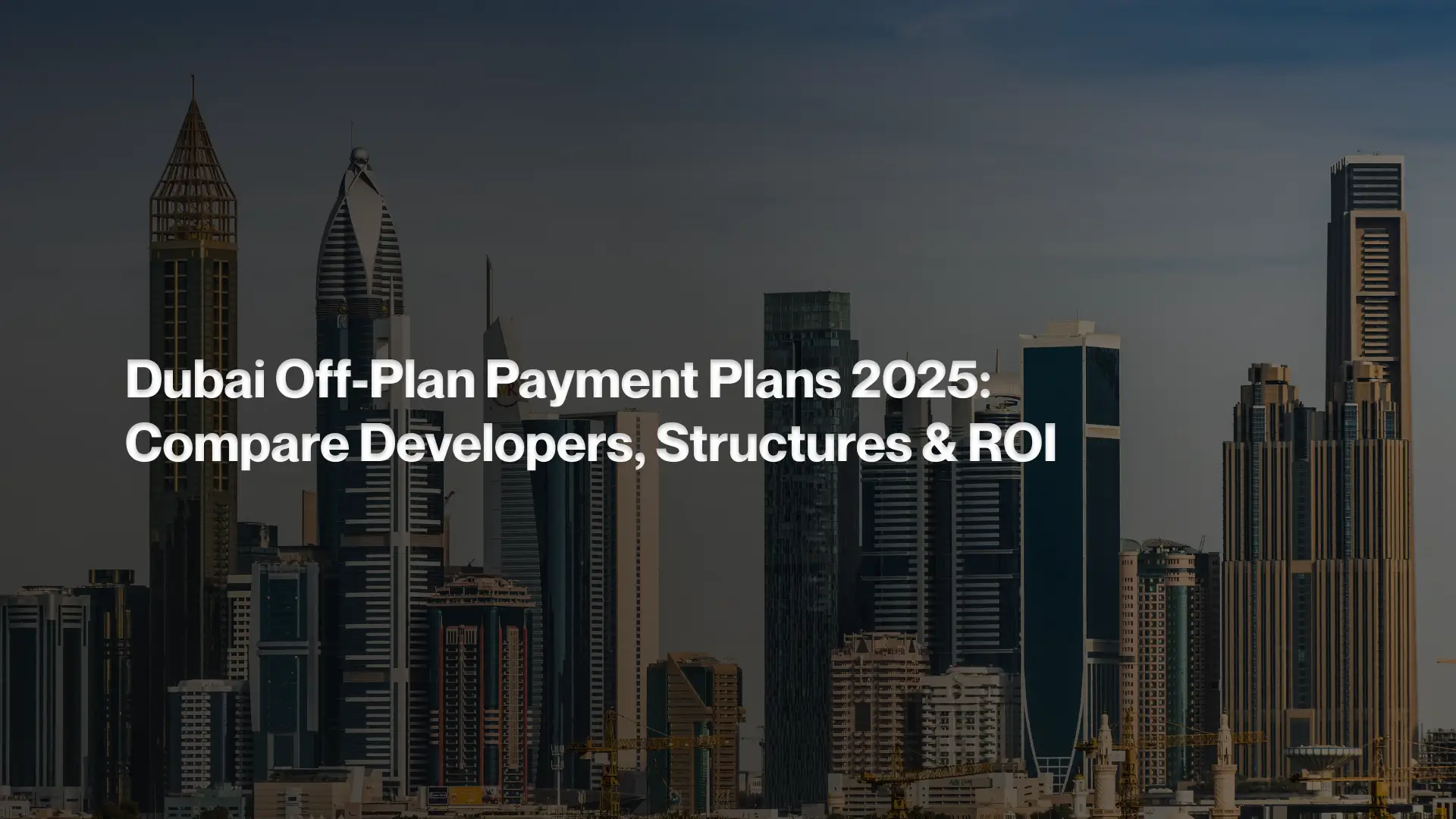
Dubai’s off-plan property market is entering 2025 with renewed momentum. While location and developer reputation remain critical, the structure of the payment plan is now a decisive factor for investors. The way installments are scheduled can significantly impact cash flow, rental yield timing, and eventual ROI.
This comprehensive guide dives into the different types of off-plan payment plans in Dubai, compares developer offerings, and analyses how each structure aligns with investor goals. With insights from fäm Properties and market intelligence from DXB Interact, this article will help you understand which payment plan works best in 2025.
Why Payment Plans Matter in 2025
The rise of off-plan launches has made developers more competitive, not just on pricing but also on financing flexibility. Buyers can now choose from a variety of installment schedules — from monthly micro-payments to post-handover balloon payments.
-
Cash flow impact: Determines how much liquidity investors need during construction.
-
Leverage and ROI: Influences return on invested capital, especially when rental yields begin.
-
Risk mitigation: Payment alignment with project milestones reduces risk exposure.
-
Investor profile fit: Each plan is better suited for different investor types — from first-time buyers to UHNW investors.
Types of Off-Plan Payment Plans in Dubai
Construction-Linked Plans
These are tied to the progress of construction (e.g., 10% on foundation, 20% on structure, 30% on finishing).
-
Popular with premium developers like Sobha.
-
Safer for investors since payments are linked to visible progress.
-
Cash-intensive upfront compared to other plans.
Post-Handover Plans
Common formats include 50/50, 60/40, or 80/20 structures where a significant portion is due after completion.
-
Attractive for cash flow management.
-
Allows investors to start rental income before completing payments.
-
Frequently used by Emaar and DAMAC for flagship projects.
1% Monthly Plans
Pioneered by Danube, this format spreads payments into small, manageable amounts.
Islamic Financing-Compliant Plans
Developers have introduced Sharia-compliant structures, such as Murabaha (cost-plus) or Ijarah (lease-to-own).
International Buyer Flexibility
Special structures exist for non-residents, offering deferred down payments or extended post-handover schedules.
Developer-Specific Comparison (2025)
| Developer |
Typical Plan |
Down Payment |
Balance |
Key Feature |
| Emaar |
80/20 |
20% |
80% on completion |
Strong delivery record |
| DAMAC |
50/50 |
20% |
50% post-handover |
Aggressive branding & marketing |
| Danube |
1% monthly |
10% |
Micro payments |
Very low entry barrier |
| Sobha |
60/40 |
20% |
40% post-handover |
Premium finishes |
| Nakheel |
60/40 Villas |
10–20% |
40% post-handover |
Large-scale communities |
Cash Flow Impact Analysis
To illustrate, consider an investor buying a AED 2M property:
-
Emaar 80/20 Plan: Pay AED 400K upfront, AED 1.6M on completion. Requires liquidity but low exposure during construction.
-
DAMAC 50/50 Plan: Pay AED 1M before handover, AED 1M after. Balanced structure with strong rental overlap.
-
Danube 1% Plan: Pay AED 20K monthly, manageable for salaried buyers. Total cash outflow spread across 7 years.
Market Insight (DXBinteract): In 2024, developers increasingly used flexible post‑handover options to attract buyers, contributing significantly to a surge in off‑plan transactions.
ROI Calculations: Case Studies
-
Plan: 1% monthly → AED 6K/month.
-
Rental yield: 8% on completion (~AED 48K/year).
-
Advantage: Rental can partially cover installments.
-
Plan: 60/40.
-
Rental income (short-term): Potential AED 2M+ annually.
-
Handover risk: Requires large balance at completion, best for cash-rich UHNWIs (Ultra-High-Net-Worth Individual).
Practical Tips for Investors
-
Use a Payment Plan Calculator: Model cash flow to ensure affordability.
-
Negotiate Terms: Some developers adjust schedules if buyers commit early.
-
Watch Out for Red Flags:
-
Back-loaded plans with balloon payments.
-
Hidden service charges not disclosed.
-
No grace periods for delayed handover.
-
Leverage Seasonality: Many new plans are announced in Q4 and Q1 with fresh launches — ideal for early entry.
Expert Recommendations by Investor Profile
-
First-Time Buyers: 1% monthly (Danube, mid-market areas).
-
Cash-Rich Investors: 80/20 or 90/10 for luxury villas and branded residences.
-
Yield-Focused Buyers: 50/50 or 60/40 plans that align rental inflows with installments.
-
Ethical Finance Seekers: Sharia-compliant Murabaha/Ijarah structures.
Conclusion
In Dubai’s 2025 off-plan market, the right payment plan is as important as the property itself. Whether it’s a Danube 1% plan for first-time buyers or an Emaar 80/20 for luxury investors, payment flexibility directly shapes ROI and risk exposure.
For tailored guidance on selecting the right project and payment structure, explore the fäm Properties New Projects Hub and connect with a specialist today.
Stay updated on Dubai’s property market with exclusive insights and new project launches on our official Telegram channel.